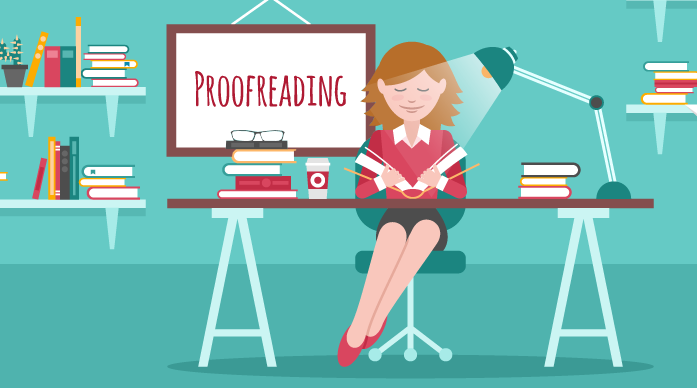


September 7, 2018
Undoubtedly, apart from having excellent writing skills, you need to know how to proofread your own essay. If you are one of those, who do not know how to proofread an essay paper professionally, keep reading our handout and you will learn many effective secrets that will significantly facilitate getting the exemplary grades. First and foremost, you need to understand that essay editing and proofreading are the important stages of the writing process that should not be underestimated. Both these stages help the writer to notice and fix the misspelled words, typos, grammatical and punctuation errors, as well as check if the paper is unique and free from plagiarism. Undoubtedly, by understanding how to proofread a paper, you will be able to get the highest grades for your writing.
When the paper is written, have some rest. We assure you that it is difficult to find the mistakes right after the writing process. If you want to be maximally focused and concentrated, you need to wait for at least a day, of course, if you have such an opportunity. Go somewhere, meet with your friends, watch an interesting movie, etc. In other words, do something that will help you relax and forget about the paper.
The editing stage implies making the changes in the rough draft. You need to read the paper and check whether it is well-organized. Also, you need to check whether there are transition words that make the writing smoother. Editing usually covers several levels: overall structure, content, style, clarity, citations, etc. As such, when editing your paper, you need to check whether it follows the prompt, whether each argument is supported with sound evidence, and whether all information used in the paper is accurate and relevant. Also, in the editing stage, the writer should check if the paper follows the classic structure with the introduction, main body paragraphs, and a conclusion. If you need to edit your paper, you have to make sure you use the appropriate tone (informative, persuasive, argumentative). When checking the wording, pay attention if all the words used are clear and understandable to your reader. If there are some terms that may be unknown, you have to explain them. Keep in mind that each quote should be cited properly in accordance with the referencing style required. All in all, if you want to get a positive grade, you have to take care of every detail.
Proofreading is the very last stage of the writing process. It mainly focuses on misspelled words, grammatical mistakes, and incorrect punctuation. As such, proofreading can be done only after proper editing. Many students commit the same mistake dedicating only a few minutes to proofreading. However, in order to get a satisfactory mark, you need to understand how to proofread effectively. Having a quick look at the paper, you will miss many important points. Sure, proper proofreading takes much time, but we assure you that it is worth all the efforts. One important point that should be taken into serious consideration: although there are many online checkers, do not rely on them too much. Of course, they may point to some obvious mistakes but only thorough manual proofreading will bring you a satisfactory result. When proofreading your paper, you need to read it very slow paying attention to every word and every comma. Also, we recommend you to separate the text into several parts and proofread them separately. Reading out loud, you will be more focused. If you want to learn how to proofread professionally, there are many manuals available online. Read them carefully and improve your skills!
Here are some of the most common mistakes that students make when writing an essay:
Although you might be inclined to just finish writing your paper and be done with it, knowing how to edit an essay is an extremely useful skill that can help you become a great writer.
We do hope that our handout was useful for you in terms of understanding how to proofread an essay. We assure you that dedicating enough time to both editing and proofreading stages, you will be able to get the best grades. No doubt, knowing how to proofread papers, you will impress your professor by the professional attitude to work.